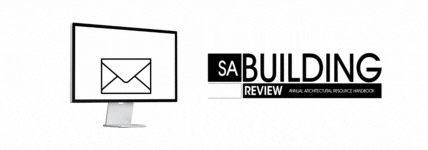This lightweight, shiny metal has long been used in constructing roofs and for vertical cladding
By Simon Norton, International Zinc Association Africa Desk
Zinc (Zn) is used in architectural applications for rainwater systems, cladding and roofing, and alloyed with copper and titanium. This combination of metals maximises tensile strength, malleability and load bearing capacity. Zinc sheet and plate develops a natural patina when exposed to carbon dioxide-rich air. The patina protects the sheet metal from rust, salt and other natural forces. Zinc panels can last up to 50 years under the right conditions.
Zinc is an ideal standing seam roof material and can be applied to many different roof types. It comes in natural (bright), pre-weathered and pigmented finishes. Zinc sheets can be formed into shingles, cassette panels and flat-lock panels to clad any building-style. This lightweight and shiny metal has long been used in constructing roofs and for vertical cladding.
Since the 18th century, zinc has been commonly used in France, Belgium, Germany, Holland and other European countries as a building material for covering roofs and facades, as well as for gutters and downpipes. When laid correctly as a roof covering, it has lasted in excess of 100 years.
Zinc is one of the most abundant metals on earth. It is a naturally-occurring element, the first in Group 12 of the Periodic Table. After aluminium, iron and copper, zinc is the fourth most-used metal in the world, with a market of US$40 billion and the 24th most abundant element in the earth’s crust. It is found primarily as sphalerite (zinc sulphide), Zincite (zinc oxide) and Franklinite. The key countries of origin are Canada, the US, Peru, Australia, Russia and Kazakhstan.
Zinc was known to the ancient Romans and Greeks, but was not produced in significant quantities until the 12th century. The dominant application in modern times is as a corrosion-resistant coating for steel (hot-dip galvanizing). Its extraction is relatively easy, avoiding strip mining and the resultant environmental degradation, while its refinement in the form of smelting and processing requires less energy than other metals such as aluminium (75% less) and copper or steel (50% less).
A lightweight material par excellence, zinc is a non-ferrous metal that provides an effective corrosion protection solution for buildings exposed to adverse weather conditions, while simultaneously delivering a creative response to architectural design requirements.
When in contact with high humidity, zinc panels generate a self-protecting layer that isolates heat from indoor spaces. Rain slide easily over its surfaces and its modular panels can wrap curved shapes or be perforated according to the architectural design, and combined in façades and/or ceilings through different shades, brightness and colours.
For construction applications, the zinc used is usually in sheet form of 99.9%+ purity but with very small concentrations of titanium and copper. It is typically applied in sheet thicknesses of 0.7 mm. The two main application methods are the traditional roll-cap and standing seam methods.





